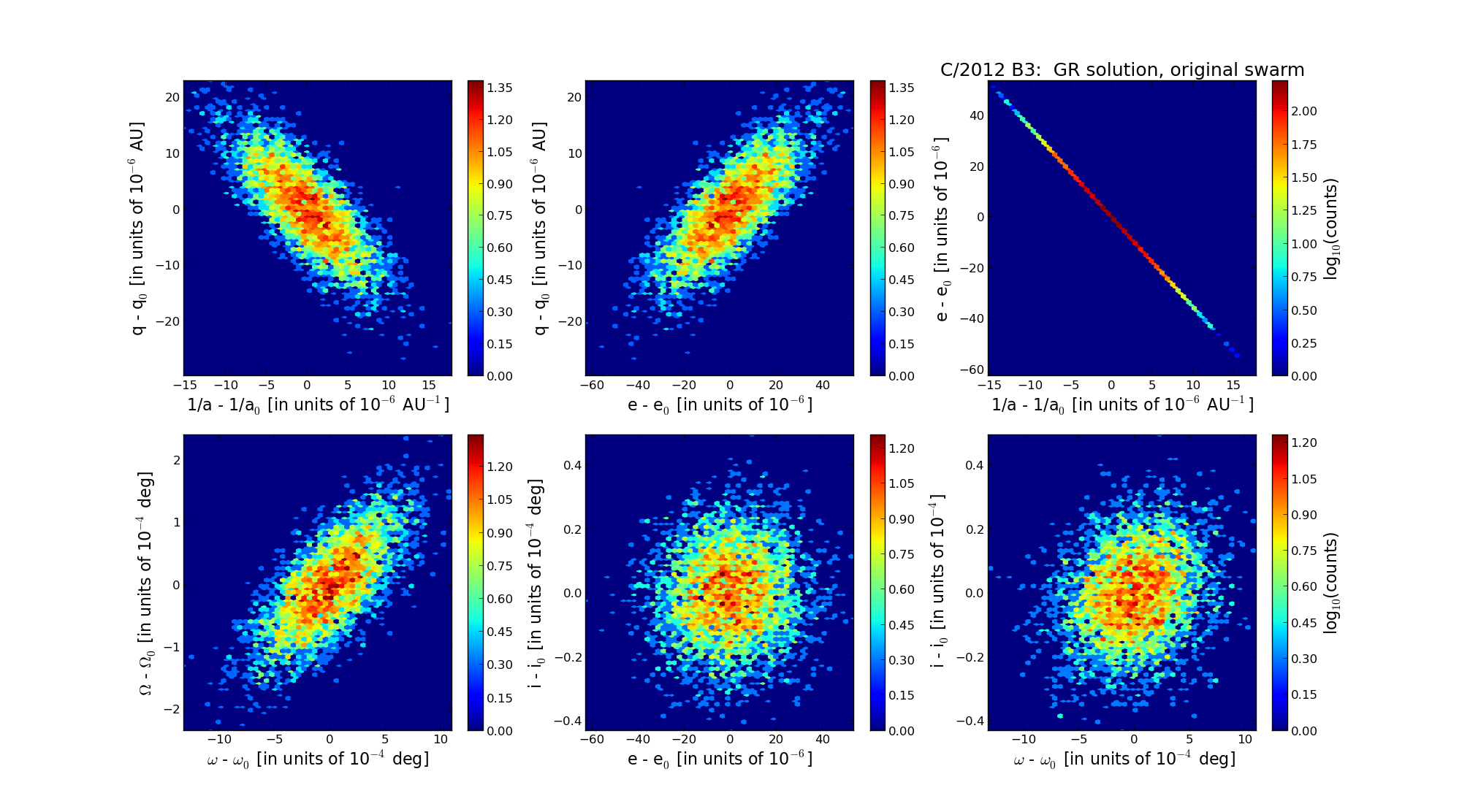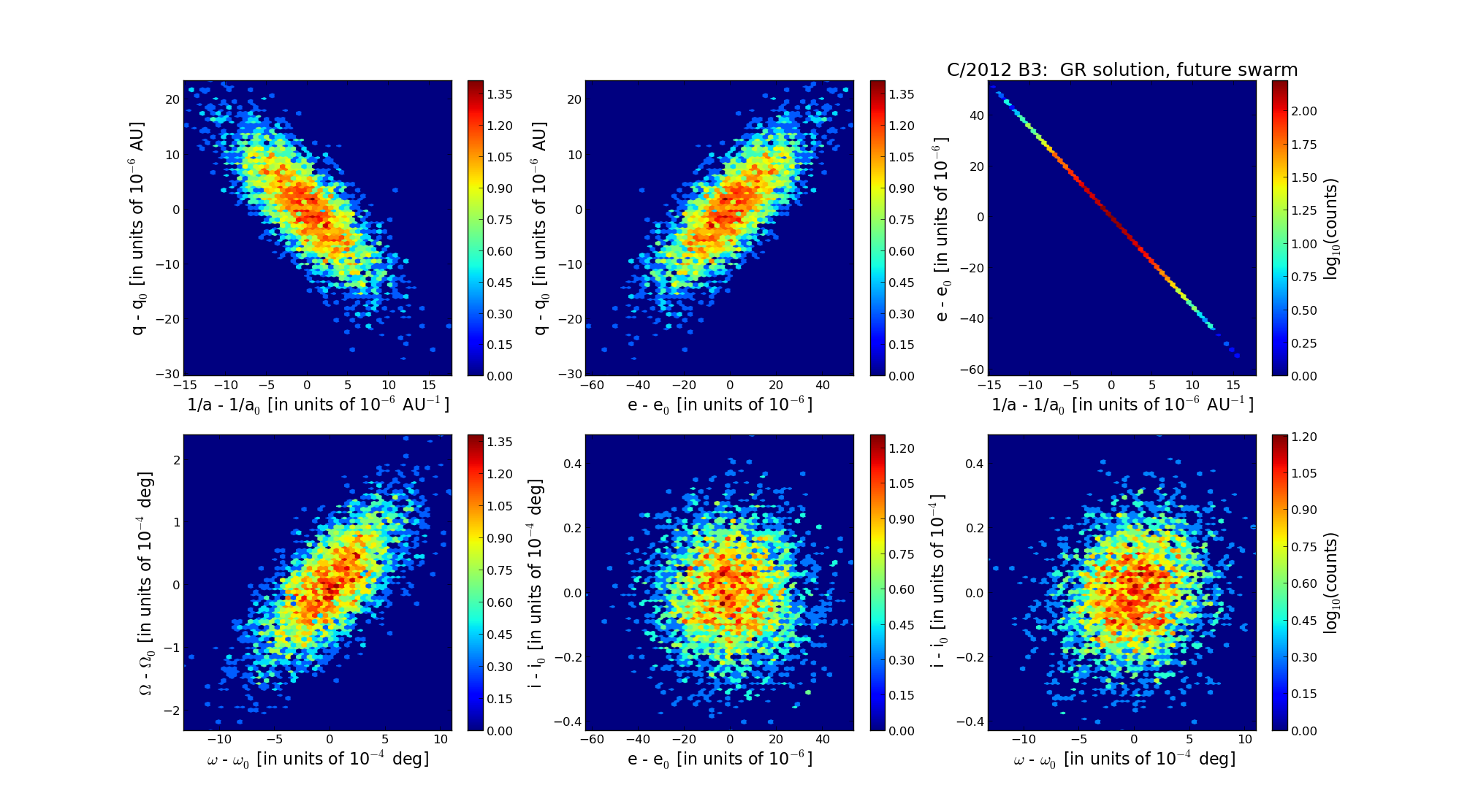| Solar System Dynamics & Planetology Group |
 |
C/2012 B3 La Sagra |  |
| Solar System Dynamics & Planetology Group |
 |
C/2012 B3 La Sagra |  |
| number of observations | 301 |
| number of residuals | 589 |
| data interval | 2012 Jan. 29 — 2012 Aug. 21 |
| rms [arcsec] | 0.38 |
| orbit quality class | 1b |
| Epoch (TT) | 20111225.0 | = JD 2455920.5 |
| time of perihelion passage (TT) | 20111206.856472 | ± 0.001501 |
| perihelion distance | 3.53656667 | ± 0.00000712 |
| eccentricity | 1.00142339 | ± 0.00001561 |
| argument of perihelion [deg] | 50.736713 | ± 0.000322 |
| longitude of the ascending node [deg] | 252.998269 | ± 0.000064 |
| inclination [deg] | 106.932238 | ± 0.000012 |
| inverse semimajor axis [10-6 au-1] | -402.48 | ± 4.41 |

| Epoch (TT) | 17080924 | |
| time of perihelion passage (TT) | 20111206.230427 | ± 0.001538 |
| perihelion distance | 3.53588030 | ± 0.00000715 |
| eccentricity | 0.99982124 | ± 0.00001565 |
| argument of perihelion [deg] | 50.760068 | ± 0.000325 |
| longitude of the ascending node [deg] | 252.940274 | ± 0.000065 |
| inclination [deg] | 106.920057 | ± 0.000013 |
| inverse semimajor axis [10-6 au-1] | 50.55 | ± 4.42 |

| Epoch (TT) | 23160321 | |
| time of perihelion passage (TT) | 20111207.123260 | ± 0.001503 |
| perihelion distance | 3.53814747 | ± 0.00000729 |
| eccentricity | 0.99949879 | ± 0.00001566 |
| argument of perihelion [deg] | 50.737091 | ± 0.000324 |
| longitude of the ascending node [deg] | 252.983956 | ± 0.000064 |
| inclination [deg] | 106.936866 | ± 0.000013 |
| inverse semimajor axis [10-6 au-1] | 141.66 | ± 4.43 |